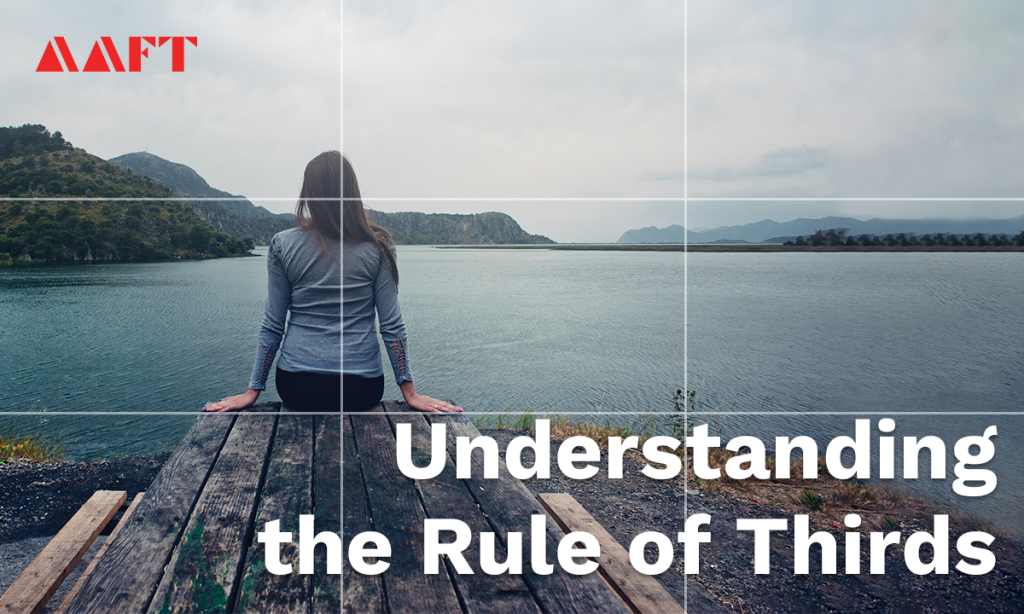Understanding the Rule of Thirds: Composition Techniques for Stunning Visuals
In the domain of visual storytelling, making enthralling and powerful images is an art that calls for a knowledge of compositional methods. Among these strategies, the “Rule of Thirds” stands out as a vital idea that can improve the quality of your visual material.
The Rule of Thirds is a traditional compositional principle that calls for splitting your frame into nine equal portions using a 3×3 grid. Subjects and focal points are then deftly placed along these gridlines or at their intersections as important components of your visual content. This method develops harmony, fascination, and a smooth flow that pulls the viewer’s attention into the picture.
The Rule of Thirds is not just an arbitrary rule; it is based on how the human eye analyses an image by default. By positioning items off-center as opposed to dead-center, you can provide vitality and prevent a stagnant, formulaic composition. By adding a sense of suspense, this method makes the image more captivating and encourages viewers to investigate the visual story.
You can give your images a sense of movement and harmony by placing important elements, such as a subject, horizon, or focal point, along these intersecting lines or at their intersections. The Rule of Thirds turns uninteresting scenes into compelling stories that evoke feelings and strengthen connections with the viewer.
Do you want free career counseling?
Ignite Your Ambitions- Seize the Opportunity for a Free Career Counseling Session.
- 30+ Years in Education
- 250+ Faculties
- 30K+ Alumni Network
- 10th in World Ranking
- 1000+ Celebrity
- 120+ Countries Students Enrolled
The Rule of Thirds emerges as a guiding star as we venture into the world of visual structure, providing a structure that cuts across media. By harnessing its force, artists may give their visuals life and create breathtaking masterpieces that stay in the minds of those who see them.
What is the Rule of Thirds?
The unseen hand that directs the viewer’s focus and shapes their emotional response to an image is a composition in the field of visual arts. The “Rule of Thirds” stands out as a timeless guideline among the wide variety of composition techniques that artists, photographers, and designers use to turn their designs into enthralling visual stories.
The fundamental idea behind the Rule of Thirds is to divide an image into nine equal parts using two horizontal and two vertical lines. With the help of this grid, a matrix of nine different sections, each with an equal number of squares, is produced, serving as the canvas for artistic expression. Four spots where these lines cross each other have been carefully chosen to form a natural structure that places key components in the proper alignment.
Book Now →
The Rule of Thirds’ strength comes from how it deviates from conventional compositional sensibilities. The traditional method frequently concentrates on the subject or major focal point, leaving the picture feeling static and balanced. Yet, the Rule of Thirds encourages designers to look outside the center and to investigate dynamic asymmetry. Important pieces are positioned along lines that cross or at their intersections to create visual tension, which draws the viewer’s eye and gives the composition a sense of energy and excitement.
This method is not exclusive to photography. The Rule of Thirds is embraced by both painters and graphic designers, who design it as a framework to organize their visual narratives. It also applies to the field of cinematography, where the positioning of people and things throughout the frame follows the same rule.

The Importance of the Rule of Thirds in Visual Composition
Composition is the unnoticed conductor who orchestrates an image’s narrative and emotional impact in the field of visual arts. The Rule of Thirds stands out as a key principle among the many composition techniques used by artists and has the ability to turn a straightforward arrangement of pieces into a dynamic and alluring visual experience.
Do you want free career counseling?
Ignite Your Ambitions- Seize the Opportunity for a Free Career Counseling Session.At its core, the Rule of Thirds uses two horizontal and two vertical lines to divide an image into nine equal sections. As a result, a grid with four points of intersection is formed, providing a tactical framework for arranging important components. The significance of the Rule of Thirds in composition is highlighted by two key factors.
- Helps an image achieve balance and visual harmony– By positioning the main focus along one of the lines or at an intersection, you can balance the composition by distributing the visual weight evenly throughout the frame. This shift away from putting subjects in the middle creates a feeling of movement and energy, making the composition more interesting and aesthetically beautiful. Artists who follow the Rule of Thirds make sure that an image’s elements work well together, grabbing the eye of the viewer while upholding an impression of order.
- The Rule of Thirds directs the sight of the spectator, sharply focusing it on the image’s subject. By positioning the subject along a line or at a place where two lines converge, you can create a smooth flow throughout the frame. This deliberate arrangement improves the image’s capacity for storytelling and enables the artists to purposefully guide the viewer through the tale. Artists can highlight focus points, generate emotions, and subtly and finesse fully deliver messages by expertly utilizing this technique.
- The Rule of Thirds overcomes its ostensibly mathematical foundations to become a potent creative tool. It alters how we view images by allowing us to interact with compositions that are not only aesthetically pleasing but also communicate with a clear purpose. The Rule of Thirds is a constant companion for artists, providing a methodical framework through which they may create images that reverberate, provoke, and stick in the mind of the viewer, regardless of whether they work in photography, painting, design, or cinematography.
How To Use the Rule of Thirds to Create Powerful Visuals
The Rule of Thirds emerges as a transforming tool in the field of visual composition that may turn commonplace images into magnificent works of art. This idea provides a structured but adaptable framework for producing amazing images that capture the eye and stir the viewer’s emotions. It is based on the partition of an image into nine equal sections by two horizontal and two vertical lines.
- Placing the Motive for Visual Impact: Placing the subject of the image along one of the lines or at an intersection point is one of the key methods to use the Rule of Thirds. This deliberate placement adds an exciting tension that draws the viewer’s eye to the topic while also improving the composition’s overall balance. When the subject is in line with the Rule of Thirds, whether it be in a portrait, landscape, or still life, the visual story is more immediate and vibrant.
- Creating Depth and Dimension: The Rule of Thirds may be a potent technique for giving a picture depth and dimension in addition to establishing focal points. The composition becomes more three-dimensional by placing the main subject in the foreground, aligned with one of the lines, and adding further objects to the background. This results in an intriguing interaction between the subject and its surroundings that engages the viewer’s perception and entices them to investigate the image’s layers.
- Adding Motion and Energy: Applying the Rule of Thirds gives the visual composition a feeling of motion and energy. The ensuing asymmetry produces a more dynamic and interesting visual experience by avoiding symmetrical compositions. As they examine the image’s details, leading lines, and spatial relationships, the viewer’s attention is held within the frame by this dynamic character.
Conclusion
The Rule of Thirds, in essence, goes beyond its mathematical roots to become a deep tool of artistic expression. Whether used in photography, design, painting, or cinematography, its principles enable creators to produce images that connect with viewers, elicit thought, and ignite inspiration. The Rule of Thirds is a powerful technique that painters use to position subjects, add depth, and balance elements in their pursuit of producing images that have a lasting impression on the perception and imagination of the viewer.
If you’re intrigued to discover more about the Rule of Thirds, AAFT- Asian Academy of Film and Television provides skill-building courses in photography that have been created by academics. Students receive in-person exposure to the state-of-the-art of photography during training sessions in the classroom. Academic courses of B.A. in photography; M.A. in photography and short time course- Diploma in Photography is offered at AAFT.
Related Blog
Lighting Techniques for Product Photography
Top 5 Editing Tools to Enhance Your Photography Skills
Mastering the Lens: A Guide to Photography Techniques
Capturing Moments, Telling Stories: The Art Of Photography
Difference between Wildlife Photography and Nature Photography












